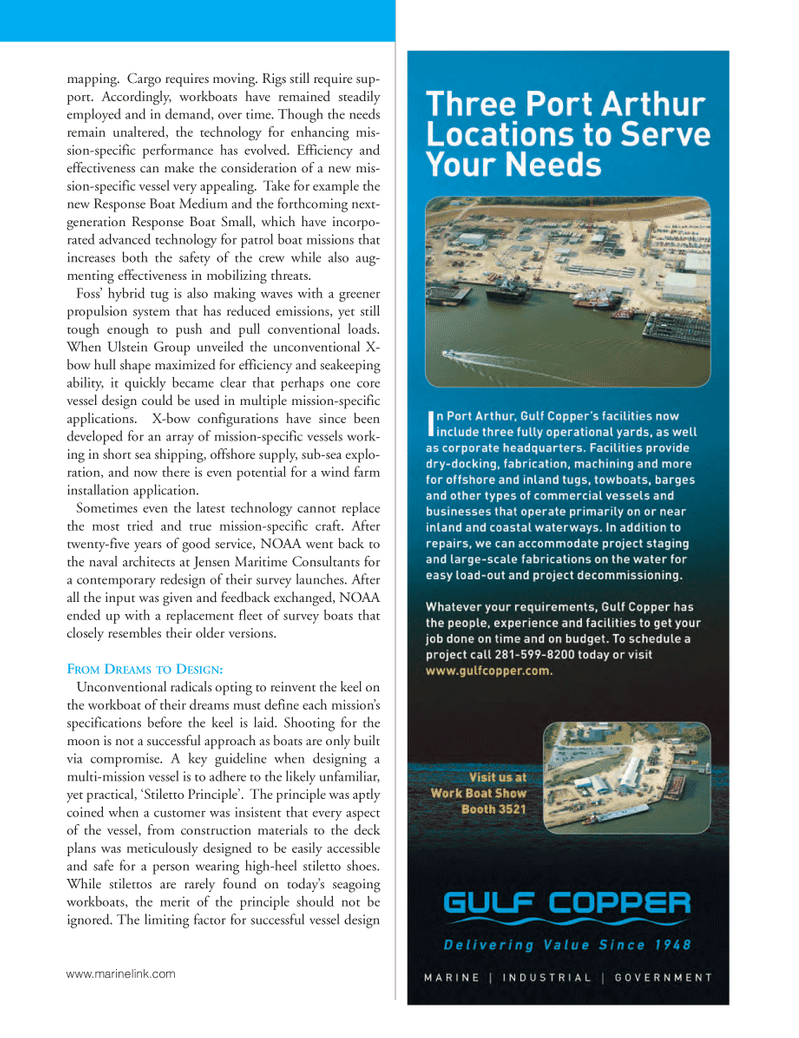
Page 47: of Marine News Magazine (November 2011)
Workboat Annual
Read this page in Pdf, Flash or Html5 edition of November 2011 Marine News Magazine
www.marinelink.com mapping. Cargo requires moving. Rigs still require sup- port. Accordingly, workboats have remained steadily employed and in demand, over time. Though the needs remain unaltered, the technology for enhancing mis- sion-specific performance has evolved. Efficiency and effectiveness can make the consideration of a new mis- sion-specific vessel very appealing. Take for example the new Response Boat Medium and the forthcoming next- generation Response Boat Small, which have incorpo- rated advanced technology for patrol boat missions that increases both the safety of the crew while also aug- menting effectiveness in mobilizing threats. Foss? hybrid tug is also making waves with a greener propulsion system that has reduced emissions, yet still tough enough to push and pull conventional loads. When Ulstein Group unveiled the unconventional X- bow hull shape maximized for efficiency and seakeeping ability, it quickly became clear that perhaps one core vessel design could be used in multiple mission-specific applications. X-bow configurations have since been developed for an array of mission-specific vessels work- ing in short sea shipping, offshore supply, sub-sea explo- ration, and now there is even potential for a wind farm installation application.Sometimes even the latest technology cannot replace the most tried and true mission-specific craft. After twenty-five years of good service, NOAA went back to the naval architects at Jensen Maritime Consultants for a contemporary redesign of their survey launches. After all the input was given and feedback exchanged, NOAA ended up with a replacement fleet of survey boats that closely resembles their older versions. FROM DREAMSTO DESIGN:Unconventional radicals opting to reinvent the keel on the workboat of their dreams must define each mission?s specifications before the keel is laid. Shooting for the moon is not a successful approach as boats are only built via compromise. A key guideline when designing a multi-mission vessel is to adhere to the likely unfamiliar, yet practical, ?Stiletto Principle?. The principle was aptly coined when a customer was insistent that every aspect of the vessel, from construction materials to the deck plans was meticulously designed to be easily accessibleand safe for a person wearing high-heel stiletto shoes. While stilettos are rarely found on today?s seagoing workboats, the merit of the principle should not be ignored. The limiting factor for successful vessel design MN#11 (32-49):MN 2011 Layouts 10/27/2011 10:01 AM Page 47

 46
46

 48
48
